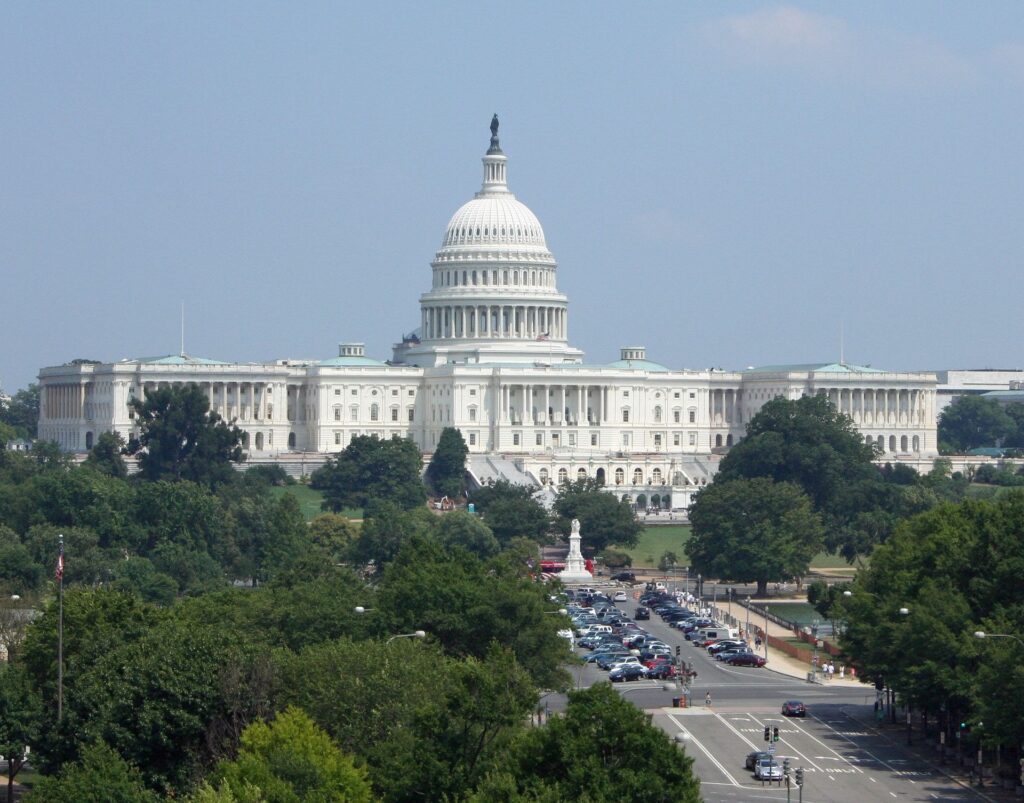Potential U.S. Debt Ceiling Breach and Implications

The federal government’s authority to issue new debt expired January 2023 when the U.S. Treasury reached its statutory debt limit of $31.4 trillion. The U.S. Treasury Department has engaged in extraordinary measures to avoid defaulting on government bills. These measures included suspending new investments of the Civil Service Retirement and Disability Fund and the Postal Service Retiree Health Benefits Fund, suspending reinvestment of the Government Securities Investment Fund and Exchange Stabilization Fund, and suspending sales of State and Local Government Series Treasury securities. Despite these measures, according to U.S. Treasury Secretary Yellen, we could see debt ceiling complications as early as June 1.
Raising the debt ceiling is historically a routine vote for Congress, and the debt ceiling has been lifted 78 times since 1960. Despite this, there is recent precedent for political brinksmanship over this issue. In 2011, the Standard & Poor’s rating agency downgraded U.S. credit from a perfect AAA to AA+ over a near default on government obligations. So how safe are T-bills?
If we look back to the debt ceiling crisis of 2011, there were similarities to the current discord in Congress. Democrats and Republicans debated over a budget plan amid concerns of growing federal debt and the upcoming presidential election. The Treasury warned of a potential default on government obligations on August 2, 2011. Congress initially delayed and then finally reached a deal to raise the debt ceiling the same day as the projected default. As a result, Standard & Poor’s downgraded the U.S. long-term credit rating from AAA to AA+ a few days later, expressing concerns over U.S. debt management. Despite the downgrade in U.S. credit, Treasury securities yields dropped during this period as investors rushed into quality government bonds, driving prices higher. The S&P 500 fell about 17% from May through September 2011, but recovered by year’s end. Gold was a major beneficiary during this period and rallied over concerns for the dollar’s value. Treasury outperformance of the broader market in 2011 indicates that despite the short-term political risk of a default, investors preferred Treasuries as a safety asset.
As in 2011, a compromise is being proposed, though both sides have so far failed to reach agreement. The recently-passed House bill would increase the debt ceiling, but only with the addition of significant spending cuts. This is creating a political impasse that may not be resolved before U.S Treasury funds are depleted. However, a compromise may be easier to reach if moderates in the House agree to invoke a “discharge petition.” This allows a bill to bypass various House committees and go directly to a House vote. This is seldom used, but it is being discussed as a way to have the debt ceiling raised without too many politically controversial add-on provisions to the bill.
Why would investors prefer Treasury bills, notes, and bonds with the potential of a government default looming? One reason could be the strong legal precedent provided by the U.S. Constitution to safeguard the owners of government debt. The Constitution establishes the supremacy of federal law. This framework provides the legal structure necessary to protect debt holders in a potential default. The Constitution protects U.S. government debt holders via the 14th amendment which states, “the validity of the public debt of the United States, authorized by law, including debts incurred for payment of pensions and bounties for services in suppressing insurrection or rebellion, shall not be questioned” [italics added]. This is the basis for the Constitution taking precedent over the debt ceiling law and process. Invoking this would allow the Treasury to issue more bonds as allowing for a default would “question the validity of the public debt.” Allowing a default would be unconstitutional, so the Treasury would be forced to ignore the debt ceiling and continue to issue more bonds. Such a position is likely to go to court, but it is doubtful that a higher court would stop the issuance of new U.S. debt while the legal process unfolds.
Supplementary debt ceiling recourse that has been discussed includes minting a trillion-dollar coin. The idea of the Treasury minting a trillion-dollar coin has been postulated as a solution to the federal debt limit as this coin could fund the Treasury without issuing more debt. By law, the Treasury has the legal authority to mint coins of any denomination and could create a trillion-dollar coin to deposit with the Federal Reserve. However, the Federal Reserve would need to accept such a coin for it to have value and be used to bypass the debt ceiling. The Federal Reserve acceptance of a trillion-dollar coin is subject to debate because of the potential political implications.
Under another approach known as prioritization, the Treasury would continue to pay interest and principal on Treasury bonds as they come due by delaying and suspending payments on other obligations. This would help ensure that the government does not default on its Treasury bond payments at the expense of other obligations. Prioritization is a controversial approach because bond holders could receive priority over other important programs such as Social Security payments and Medicare. Another option is that the Treasury could issue IOUs to its creditors in lieu of cash payments. While this approach has been used in the past by states facing budget shortfalls, it is unclear whether it would be legal for the federal government to issue IOUs in place of Treasury bond payments.
The trillion-dollar coin, prioritization, and IOUs are politically polarizing solutions and likely to be legally contested. Nevertheless, one or several of these “solutions” may be needed in order to avoid a debt default and to make good on the Senate leadership’s statement that “The United States is not going to default. It never has and it never will.”
Avoiding a Treasury securities default is a critical step in avoiding permanently higher interest rates and in avoiding potential financial crises around the world. However, even if there are no defaults on Treasury securities, the debt ceiling being breached could affect millions of federal employees, vendors, businesses, and related parties. This could risk triggering a recession that people have been worried about for about a year. Therefore, a Congressional bill that increases the debt ceiling breach is still the preferred solution.
If the Treasury has enough funding for the first two weeks of June, tax receipts from June 15 estimated tax payments could delay any debt ceiling breach until late July or August. In this case the problem is pushed out several months. We cannot know for sure how long a debt ceiling breach can be delayed. However, if pushed out, it gives more time to resolve, including the use of the discharge petition as mentioned above. Despite this, it is our opinion that Treasury debt will remain a safety asset even in the event of a short-term default.
As always, please feel free to contact WESCAP at (818)563-5170 if you would like to discuss any of this further.
